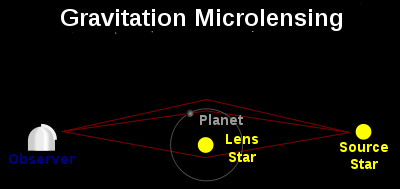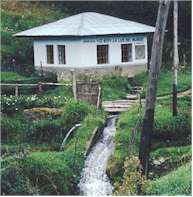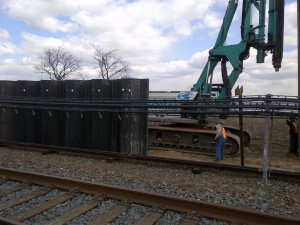Headlines that caught my eye in the last week:
- Astronomers Predict 100 Billion Earth-Like Planets Inhabit the Milky Way;
- Bladeless Wind Energy Technology Debuts in Delft;
- Micro Hydro-Electricity and Mini-Grids a Cost Effective Option;
- Post-Sandy New York Builds Steel Wall to Protect Subway;
- NASA Seeks Space Technology Proposals from U.S. Schools.
100 Billion Earth-Like Planets?
That number sounds impossibly large but so is the Milky Way, our galaxy. How have researchers at the University of Auckland in New Zealand arrived at this estimate? The technique they are employing is called gravitational microlensing.The researchers intend to combine their findings with data from the NASA Kepler mission which has already found thousands of planets.
From Kepler data astronomers have estimated 17 billion Earth-like planets in our galaxy. But Kepler’s method of capturing changes in the level of light emitted by a star when a planet crosses in front of it only catches a small number of the total potential planets out there. That’s because it can only detect planets on a similar orbital plane to ours.
But what about other planetary systems that orbit on a different plane? That’s where gravitational microlensing comes in with its ability to detect planets like Earth orbiting around a distant star when a background star’s light gets slightly deflected as it passes by the planetary system on its way to being viewed here on Earth. Add those Earth-like planets and the astronomers think the number is much closer to 100 billion.
A Bladeless Wind Energy Source
It is only a prototype at the moment but the structure you see in the image below is a windmill that generates electricity. It goes by the name EWICON which stands for Electrostatic WInd Energy CONverter. EWICON has no moving parts and therefore does not rely on a turbine to generate power. Instead it uses charged water droplets that get released into the air and as the wind blows creates an electric field that can send power to the grid or an individual building.
Mecanoo is the architectural firm responsible for the design of EWICON which has no moving parts and produces no noise. A prototype sits in front of the Faculty of Electrical Engineering, Mathematics and Computer Science at Delft University in the Netherlands. Two more are incorporated into a sign on top of a building in Rotterdam. You can watch an explanation of how EWICON works on YouTube. You might get a “charge” from viewing it.
Tiny Niagaras to Provide Hydroelectricity in the Developing World
Another energy story but this one takes you back to the days of water wheels as power sources.
When we think of hydroelectricity we almost always picture big projects like the Three Gorges, Aswan or Niagara Falls. Not the picture seen in the image below. But to get rural electrification going in many parts of the world, particularly in hilly remote areas with many small streams and rivers, micro hydroelectricity is as viable as solar or wind as a source of renewable energy. And it may be even be cheaper and more reliable. A typical station generates between 25 and 50 Kilowatts of energy and can be connected to a local micro-grid providing power to a remote village.
Nepal and Afghanistan are leading the way with such projects replacing diesel generators that are subject to the availability of supply and cost of the fossil fuel. Today Nepal has almost 20 Megawatts of installed micro hydroelectric capacity.
A Steel Curtain Goes Up in New York After Hurricane Sandy
The Metropolitan Transportation Authority or MTA took a beating when Hurricane Sandy struck last fall. The storm surge and subsequent tides wiped out over 3 kilometers (2 miles) of track. To-date MTA service to Queens has yet to be fully restored months after the hurricane made landfall.
The MTA built a berm of rock and gravel as a temporary barrier but now they are spending $38 million on a marine steel wall capable of resisting saltwater corrosion for a century. Each steel piece is more than 12 meters (40 feet) tall. The project involves burying 10 meters (33 feet) under ground leaving 2 meters (almost 7 feet) visible. The wall should be complete by May 1st.
Is 10 meters down and 2 meters above ground enough to stop another storm surge? Time will tell.
NASA Invites Proposals on New Space Technology Initiatives from Universities in the United States
For NASA to continue to meet its human and robotic space mission goals it is creating initiatives with private industry and U.S. accredited universities for answers. In its latest announcement it is inviting proposals from academic institutions to provide better scientific instrumentation for orbiters and landers, advanced optics for a new generations of space telescopes, improved technologies to support long-duration space missions, and new ideas on systems to protect the planet from potential near-Earth asteroid strikes.
In the press conference announcing the initiative, Michael Gazanik, NASA’s associate administrator for the Space technology Mission Directorate, stated, “”NASA’s collaboration with the National Research Council and the agency’s recent Strategic Space Technology Investment Plan have helped us identify areas where new, cross-cutting space technologies are needed to enable our future missions. Now we’re reaching out to American universities to tap into the nation’s best and brightest minds to help solve these tough technology problems.”
NASA intends to provide ten awards by the fall each worth $250,000. NASA may provide continuous funding beyond the initial award based on progress beyond one year.
In 2012 NASA awarded innovation grants to ten universities for a variety of proposals including thermal management systems, new readout devices, radiation protection systems and more.
A Postscript
If you are a regular reader of 21st Century Tech blog you may have noticed a few less postings in the last couple of weeks. Attending to deconstructing my home of the last 18 years is taking up some of my time. And with my daughter having just become engaged, my family is now also doing wedding planning. So life around here is pretty hectic. Nevertheless I will continue to endeavor to share with you what I find fascinating about our technological and scientific progress here in the 21st century and welcome you to join in the conversation. As always thank you for dropping by.
– Len Rosen












((Nepal and Afghanistan are leading the way with such projects replacing diesel generators that are subject to the availability of supply and cost of the fossil fuel. Today Nepal has almost 20 Megawatts of installed micro hydroelectric capacity.))
This is a great way to produce power in remote mountains. Unfortunately there are few remaining stream sites that are suitable. Francis turbine systems can run for decades with little or no maintenance. Ordinarily, no major dam impoundment is employed; so capital costs per unit of capacity tend to be low.
Hydropower production is a function both of penstock head pressure and water mass flow. The head pressure is generally fixed by the physical installation, the higher the better, because less water volume is needed to produce each unit of power, but in most cases available water volume varies greatly with the season. Since no significant impoundment is available, power production is limited to real time stream flow rates. So while stream flow rates can sometimes reach the turbine generators’ nameplate capacity, often the stream flow rate, which is obviously dependent on seasonal precipitation, won’t sustain even 10% of installed nameplate capacity. (This is similar to wind turbines where nameplate capacity is related to 27 MPH wind speed. Wind turbines rarely operate in sustained wind speeds in excess of 18 MPH.) So it sort of turns out that capital is stranded in the turbine generators that are sized large enough to capture all the maximum stream flow, but are 90% larger than needed for minimum flow rates. Still it’s probably the best way to electrify remote mountain villages that have year-round stream flows. The ideal situation is to connect the small hydropower plant to a major utility grid. Then when stream flow is at maximum, nearly full nameplate capacity can flow into the grid, which generates revenue for the hydroplant operators. When stream flow is minimum the operators can consume all their power locally, or even draw off the grid.
Such an ideal installation exists in the US on Deep Creek near North Port, WA. See:
https://plus.google.com/photos/106788585722120874733/albums/5419718005012461377?banner=pwa&gpsrc=pwrd1#photos/106788585722120874733/albums/5419718005012461377?banner=pwa&gpsrc=pwrd1
The private owner operator collects about $90,000 each year from the local power grid. The owner has 400 KW of nameplate capacity installed, but only a few months of the year produce enough stream flow rate to keep both his turbines spinning. Notice the scenic waterfall in the linked pictures. That’s electrical power and potential revenue from the local power grid going to waste down the creek. Gordon owns three 100 KW turbines (shown sitting on the powerhouse deck in the linked pictures), which could capture more of the maximum stream flow. But he hasn’t bothered to install the extra turbines, because with climate change affecting precipitation patterns it’s a gamble whether enough stream flow will be available to ever justify the installation costs.
Thanks for the additional information which I hope my readers access.